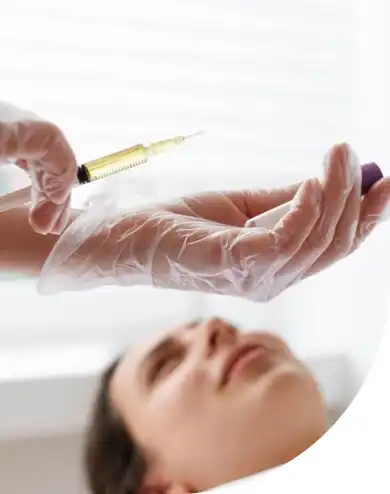What are Platelet Rich Plasma
(PRP) Injections?
Home > Treatments > Platelet Rich Plasma
When one undergoes Platelet-Rich Plasma (PRP) therapy in London with injections, the process involves extracting a small sample of the patient’s blood, which is then spun in a centrifuge to separate the platelets from other elements of blood. The concentrated platelet-rich plasma is injected into the affected area, delivering a potent dose of growth factors and cytokines to stimulate tissue repair and regeneration.

1. Persistent joint pain, especially post-injury or due to arthritis
6. Muscle injuries that fail to heal with rest and physical therapy
2. Receding hairline or thinning hair with no impact of traditional treatments
3. Chronic tendon injuries like tennis elbow or Achilles tendonitis
4. Skin aging signs such as wrinkles, fine lines and texture changes
5. Slow healing wounds or ulcers
6. Muscle injuries that fail to heal with rest and physical therapy
7. Loss of volume or elasticity in the skin
8. Chronic inflammation conditions
9. Reduction in collagen production leading to skin laxity
10. Degenerative conditions like osteoarthritis
What Injuries can Platelet-Rich Plasma (PRP) Injections Treat?
Platelet-rich plasma (PRP) injections can effectively treat a variety of musculoskeletal injuries and conditions, including:

- PRP injections are also used to enhance healing and recovery following orthopaedic surgeries, such as tendon repair or joint reconstruction.
- Tendon injuries such as Achilles tendonitis, rotator cuff tears, tennis elbow, and patellar tendonitis.
- Ligament injuries such as sprains or tears in the ACL, MCL, or LCL.
- Joint injuries such as osteoarthritis, degenerative joint disease and cartilage defects.
- Soft tissue injuries such as muscle strains, ligament sprains and plantar fasciitis.
- PRP injections are also used to enhance healing and recovery following orthopaedic surgeries, such as tendon repair or joint reconstruction.
